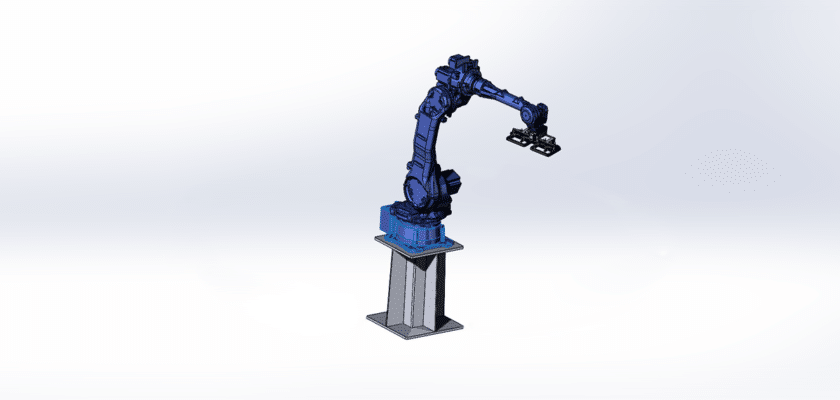A Robot Loading and Unloading Equipment Drawing is a detailed technical illustration that depicts the design, components, and operational workflow of a robotic system specifically engineered for automating the loading and unloading of materials, components, or products. This drawing is essential for engineers, operators, and technicians involved in the development, operation, and maintenance of automated handling systems.
Key Features:
- Overall Layout: A comprehensive view of the loading and unloading system, showcasing the arrangement of robotic arms, conveyors, and storage or processing areas within the operational environment.
- Robotic Arms: Detailed illustrations of the robotic arms used for loading and unloading tasks, including:
- Arm Configuration: Information about the structure, links, and joints of the robotic arms, highlighting their degrees of freedom to facilitate flexible and precise movements.
- End Effectors: Descriptions of specialized tools or grippers designed for handling various materials, such as suction cups, forks, or custom clamps, tailored for specific applications.
- Loading and Unloading Mechanisms: Diagrams illustrating the processes involved in loading and unloading, including:
- Conveyor Systems: Details on conveyor belts or automated guided vehicles (AGVs) that transport materials to and from the robotic station.
- Orientation and Positioning Systems: Information on mechanisms that ensure materials are correctly oriented for efficient loading or unloading.
- Control Systems: Information about the central control unit managing the robotic operations, including:
- Programmable Logic Controllers (PLC): Descriptions of PLCs or industrial computers that coordinate the movements of the robot and material handling processes.
- User Interface: Illustrations of control panels or software interfaces that allow operators to program tasks, monitor system performance, and make adjustments.
- Safety Features: Information on safety mechanisms integrated into the system, such as:
- Emergency Stop Systems: Easily accessible emergency stop buttons located near the loading and unloading stations.
- Safety Guards and Sensors: Information on protective barriers, light curtains, and sensors designed to enhance operator safety during operation.
- Material Handling Systems: Illustrations of systems used to transport materials to and from the loading and unloading stations, including:
- Automated Storage and Retrieval Systems (AS/RS): Systems that facilitate efficient storage and retrieval of items.
- Forklifts or Pallet Jacks: Information on additional equipment that may be used in conjunction with robotic systems.
- Quality Control Measures: Descriptions of integrated quality control systems, including:
- Inspection Stations: Information on sensors or cameras that verify the accuracy of loaded or unloaded items.
- Testing Equipment: Details on any testing apparatus used to ensure the quality and integrity of materials being handled.
- Maintenance Access Points: Guidance on areas designed for easy access during maintenance and repair, facilitating efficient servicing of the robotic equipment.
- Performance Specifications: Summary of key performance metrics, such as loading and unloading speeds, accuracy, and operational efficiency, providing essential information for process optimization.
- Application Context: Brief descriptions of typical applications for loading and unloading systems across various industries, including manufacturing, warehousing, logistics, and food processing.
This drawing serves as a vital reference for anyone involved in the design, operation, and maintenance of robotic loading and unloading systems, ensuring effective performance, reliability, and adherence to industry standards in automated material handling.
